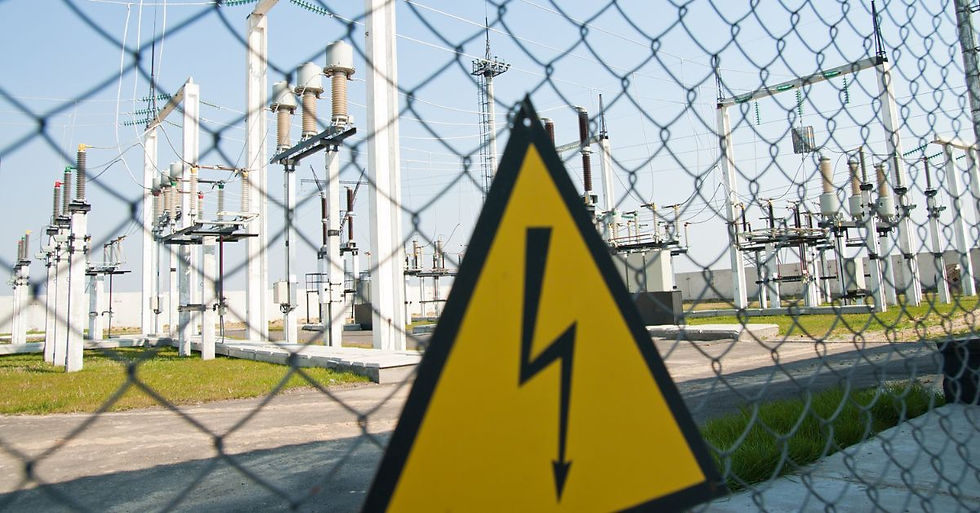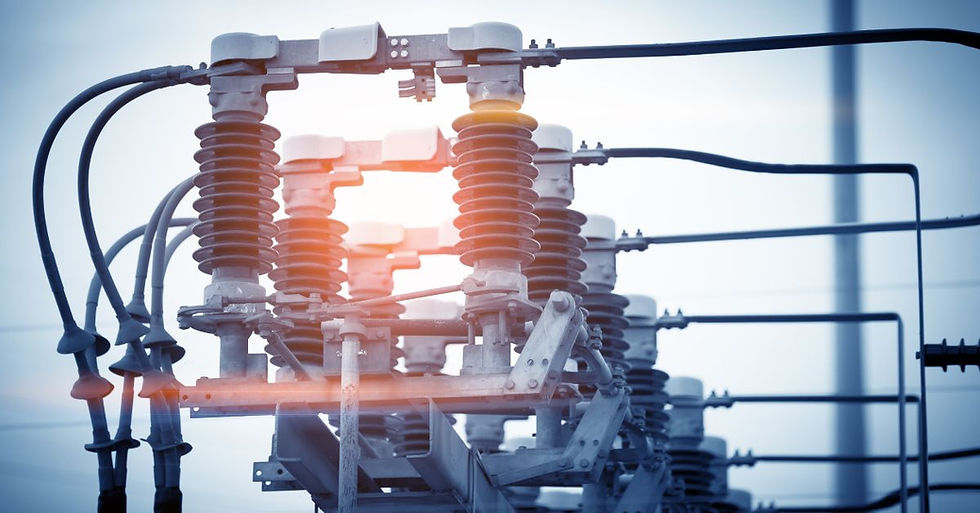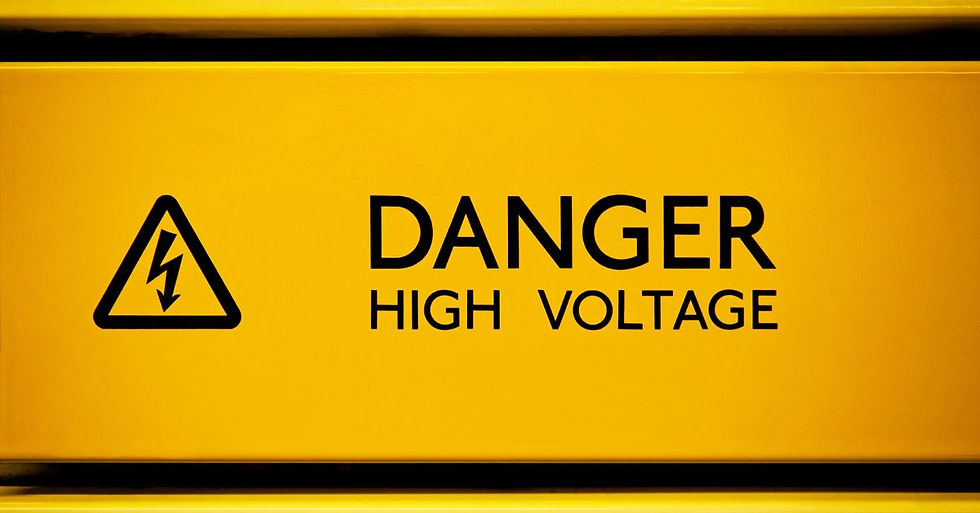11 Reasons Your High-Voltage Power Supply Is Arching
- Ryan Saldana
- Jan 10
- 4 min read

High-voltage power supplies are the backbone of many electronic systems, known for their ability to deliver high energy in a compact form. However, these systems can sometimes exhibit a pesky problem known as arcing. This disrupts performance and leads to larger system failures if not addressed.
In this article, we will unravel the reasons why your high-voltage power supply is arcing. We’ll explore common causes, provide practical insights, and offer actionable advice to keep your equipment running smoothly. By the end of this article, you’ll be well-equipped to tackle this issue head-on.
Understanding Arcing in High-Voltage Power Supplies
Arcing occurs when an electrical current flows through the air between two conductive points, which creates a visible spark. In high-voltage power supplies, this can lead to significant energy loss and potential equipment damage. It’s necessary to recognize that arcing often arises when there is a breakdown in the insulation or an increase in the electric field strength. By understanding the nature of arcing, you can better identify and mitigate its causes, ensuring your system’s longevity and reliability.
1. Insulation Failures and Their Effects
One of the primary reasons your high-voltage power supply might be arcing is an insulation failure. When insulation materials degrade over time or become damaged, they lose their ability to prevent electrical discharges. This can result in energy escaping from its intended path, causing an arc.
You might notice performance inconsistencies or even experience equipment shutdown. Regularly inspecting and maintaining insulation is important to prevent such failures and keep your power supply in optimal condition.
2. The Role of Humidity in Arcing
Humidity plays a significant role in the performance of high-voltage power supplies. Moisture in the environment can penetrate insulation materials, which leads to a reduction in their resistive properties.
This increased conductivity makes it easier for arcing to occur, especially in areas with high humidity levels. If you suspect moisture is contributing to arcing, consider using dehumidifiers or installing your equipment in a controlled environment. Keeping your power supply dry can greatly reduce the risk of arcing due to humidity.
3. Contaminants and Their Contribution to Arcing
Contaminants such as dust, dirt, and debris can accumulate on the surfaces of your high-voltage power supply. These particles can create conductive paths that facilitate arcing. Even a small layer of dust can significantly impact the performance of your equipment.
Regular cleaning and maintenance routines are important to keep your power supply free from contaminants. Investing in high-quality enclosures can also help protect your equipment from dust and other pollutants.

4. Overvoltage Conditions and Their Impact
Overvoltage conditions can lead to arcing in high-voltage power supplies. When the voltage exceeds the design specifications of your system, it can cause insulation breakdown and subsequent arcing. This is particularly common in systems that experience power surges or transient voltages.
It’s essential to monitor voltage levels and employ protective devices such as surge protectors and voltage regulators. These precautions can help maintain the integrity of your power supply and prevent arcing.
5. Inadequate Spacing and Its Consequences
Inadequate spacing between conductive components is a common reason for arcing in high-voltage power supplies. When placing components too closely, the electric field strength can increase, resulting in arc formation.
Ensuring proper spacing during the design and assembly of your power supply can mitigate this risk. If you suspect spacing issues, reevaluate your setup, and make necessary adjustments to reduce the likelihood of arcing.
6. Poor Connections and Arcing Potential
Loose or corroded connections in your high-voltage power supply can lead to arcing. When connections are not secure, it creates points of high resistance that generate heat and may result in an arc.
Regularly checking and tightening connections can prevent this problem. Additionally, using high-quality connectors designed for high-voltage applications can further enhance the reliability of your system.
7. Material Incompatibility and Its Effects
Using materials that are not compatible with high-voltage applications can increase the risk of arcing. Certain materials may not withstand the electric field strength or may degrade more quickly under high-voltage conditions.
Selecting materials specifically designed for high-voltage applications is essential. If you suspect material incompatibility is causing arcing, consult with experts to choose the right components for your power supply.
8. Thermal Issues and Their Impact on Arcing
Excessive heat can degrade insulation materials and other components in your high-voltage power supply, which leads to arcing. Inadequate cooling systems, excessive current, or poor environmental conditions can cause overheating.
Implementing efficient cooling solutions and monitoring temperature levels can help manage thermal issues. Keeping your equipment cool will reduce the risk of arcing related to thermal stress.

9. Design Flaws and Arcing Risks
Design flaws in your high-voltage power supply can contribute to arcing problems. These flaws may include improper layout, insufficient insulation, or inadequate component selection.
Conducting thorough design reviews and testing can identify potential issues before they lead to arcing. In cases where you suspect design flaws, collaborate with experienced engineers who can provide valuable insights and solutions.
10. The Right Accessories for Your Power Supply
Choosing the right accessories can significantly impact the performance of your power supply. Quality components designed for high–voltage applications can reduce the risk of arcing.
HVM Technology offers a wide range of high-voltage accessories that can enhance your system’s reliability. By investing in the right accessories, you can optimize the performance of your power supply and prevent arcing.
11. Regular Maintenance and Its Importance
Routine maintenance is key to preventing arcing in high-voltage power supplies. Regular inspections identify potential issues before they become a major problem. Check for signs of wear and tear, contamination, and loose connections. By prioritizing maintenance, you can extend the lifespan of your equipment and minimize the risk of arcing.
Addressing why your high-voltage power supply is arcing requires a multifaceted approach. Insulation failures and poor connections are just a few of the factors that can lead to arcing. By understanding these issues and taking proactive measures, you can make sure your power supply operates efficiently and reliably.
For those requiring high-voltage accessories or expert guidance, HVM Technology is here to support your needs. Reach out to learn how we can enhance your high-voltage power supply and prevent arcing issues.





Comments